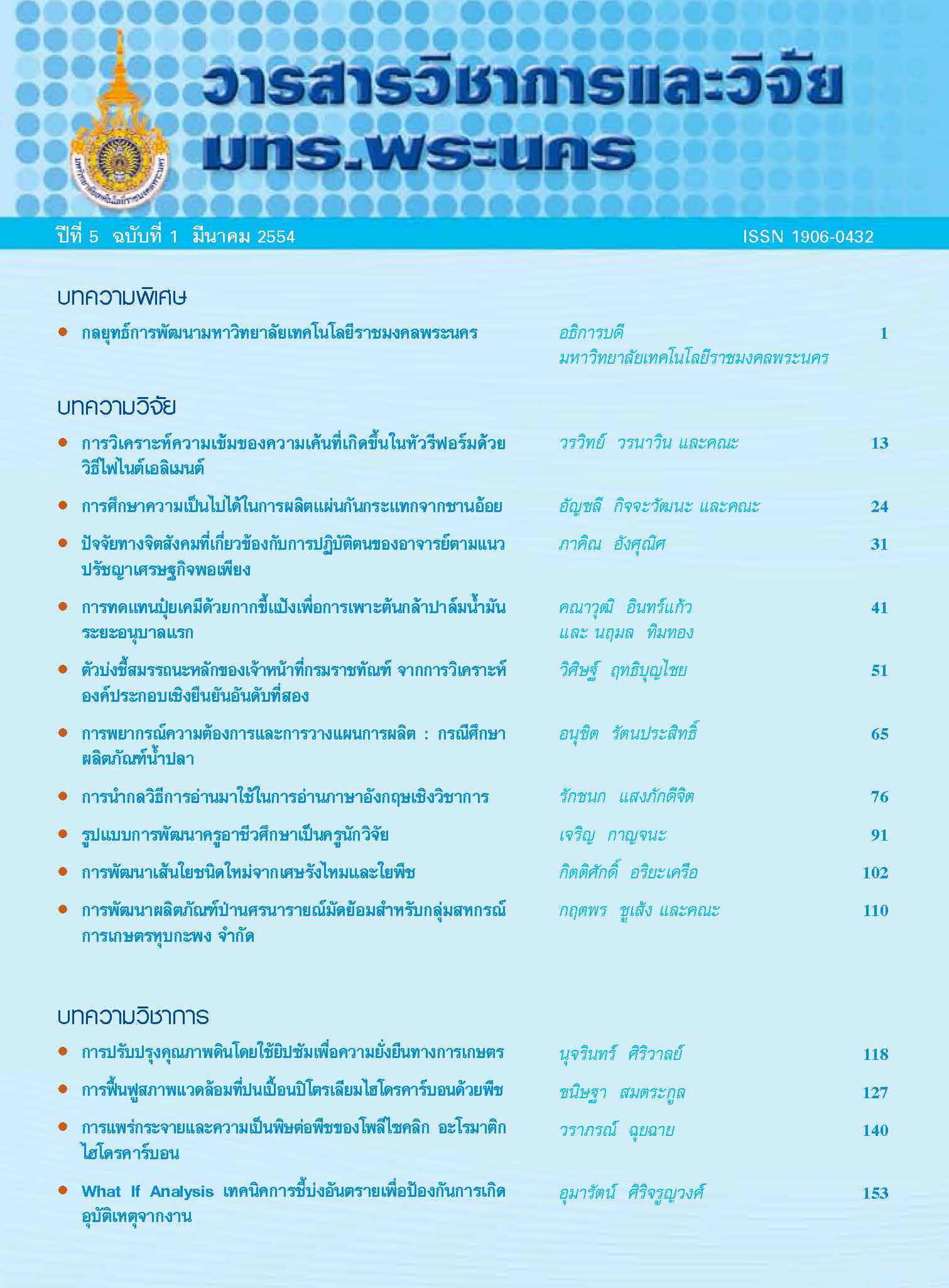การวิเคราะห์ความเข้มของความเค้นที่เกิดขึ้นในหัวรีฟอร์มด้วยวิธีไฟไนต์เอลิเมนต์
Main Article Content
Abstract
บทคัดย่อ
งานวิจัยนี้เป็นการวิเคราะห์ความเข้มของความเค้นที่เกิดขึ้นภายในหัวรีฟอร์มโดยระเบียบวิธีไฟไนต์เอลิเมนต์ ซึ่งหัวรีฟอร์มมีลักษณะเป็น C-clamp ใช้ในการบีบอัดหน้าแปลนเสื้อเพลาขับหลัง โปรแกรม Solid Works และ Cosmos ใช้ในการสร้างแบบจำลองและวิเคราะห์ตามลำดับ ผลการทดสอบจริงและ วิธีไฟไนต์เอลิเมนต์ มีความคลาดเคลื่อน 8.1%. สรุปว่าแบบจำลองที่สร้างขึ้นสามารถนำมาใช้ในการวิเคราะห์ปัญหานี้ ได้ผลวิเคราะห์ ที่ความดัน 230, 270, 300, 350 และ 380 bars พบว่า ความเข้มของความเค้นที่คอของหัวรีฟอร์มเท่ากับ 227, 265, 289, 354, 382 MPa และมีค่าความปลอดภัยเท่ากับ 2.3, 2.0, 1.8, 1.5, 1.38 ตามลำดับ ความเข้ม ของความเค้นจะแปรผันตรงตามค่าความดันที่ลดลง การเพิ่มรัศมีความโค้งเป็นแบบไม่คงที่ที่คอหัวรีฟอร์มจะสามารถลดความเข้มของความเค้นลงได้
คำสำคัญ : ความเค้นและความเครียด ความเข้มของความเค้น ระเบียบวิธีไฟไนต์เอลิเมนต์
Abstract
This research analyzes the concentration of stress that occurs in the reform by a finite element method. The reform looks like C-clamp used in the compression rear axial drive’s flange. SolidWorks and Cosmos programs are used for modeling and analysis respectively. The comparative results between actual tests and finite element method had error 8.1%. It is concluded that the model of finite element method can be used in this problem’s analysis. Analyses adjust pressure at 230, 270, 300, 350, 380 bars. It is found that stress concentration at the neck is 227, 265, 289, 354, 382 MPa. The safety factors of the neck are 2.3, 2.0, 1.8, 1.5, 1.38 respectively. Stress concentration will be direct variation with reduced pressure. If increasing radius of curvature is not fixed at the neck, it can reduce the stress concentration.
Keywords : Stress and Strain, Stress Concentration, Finite Element Method


